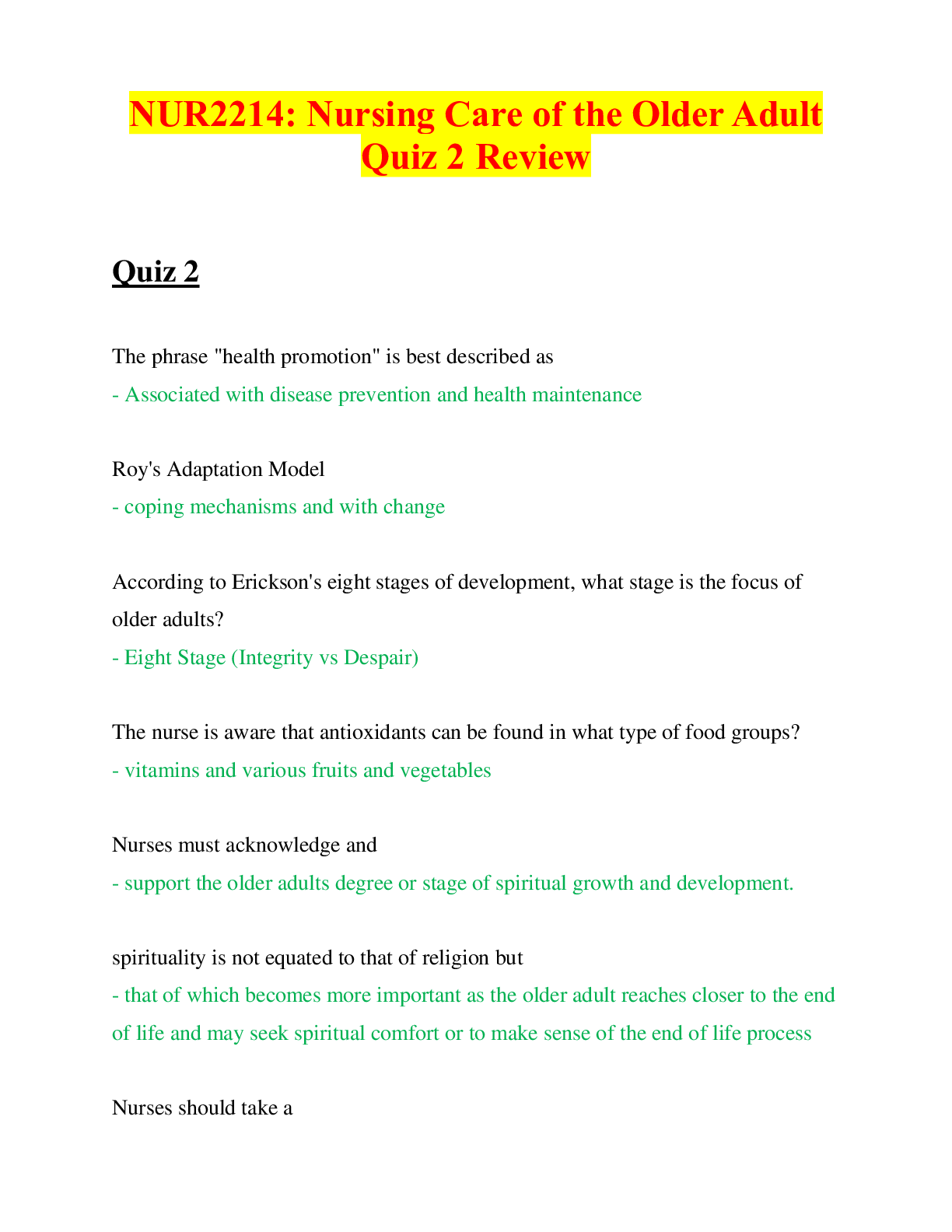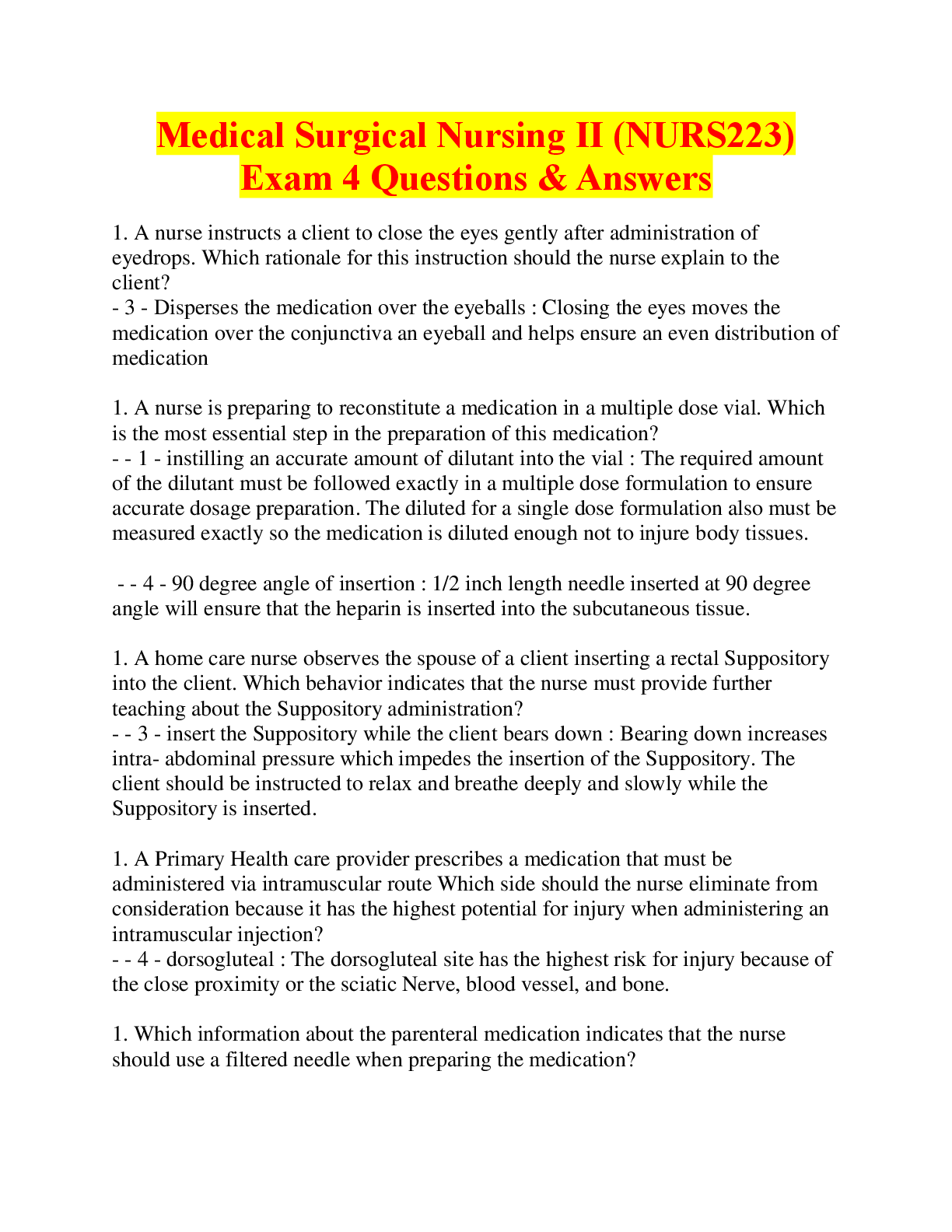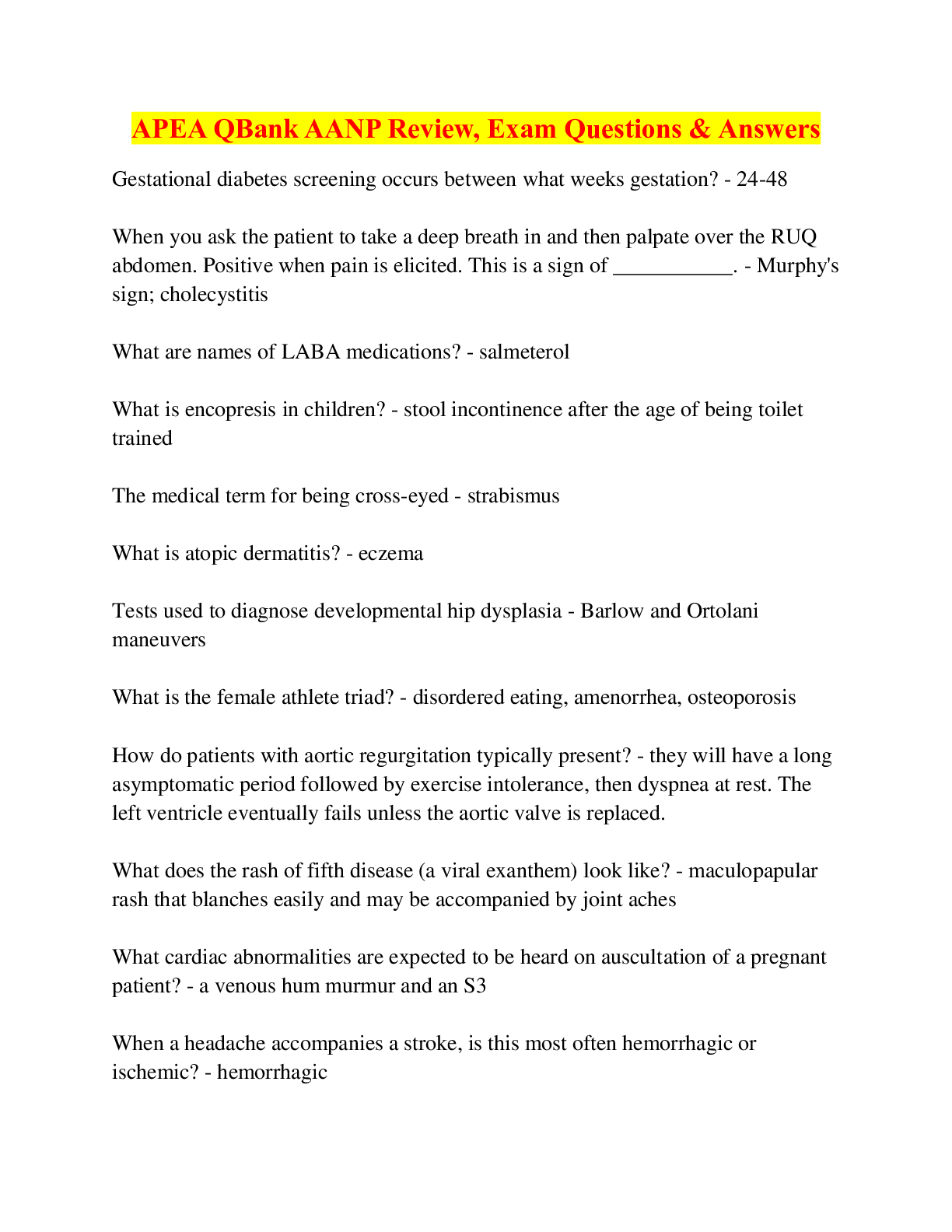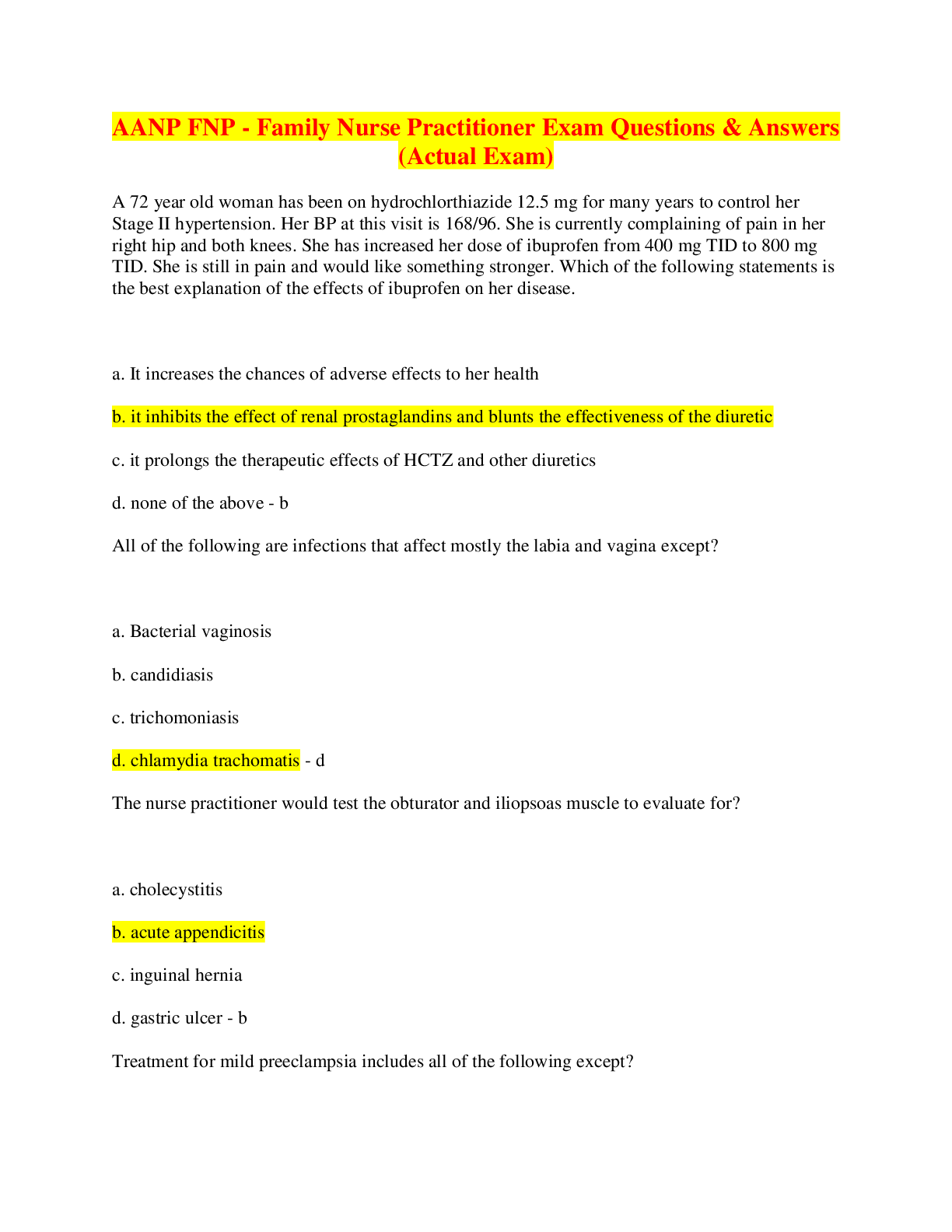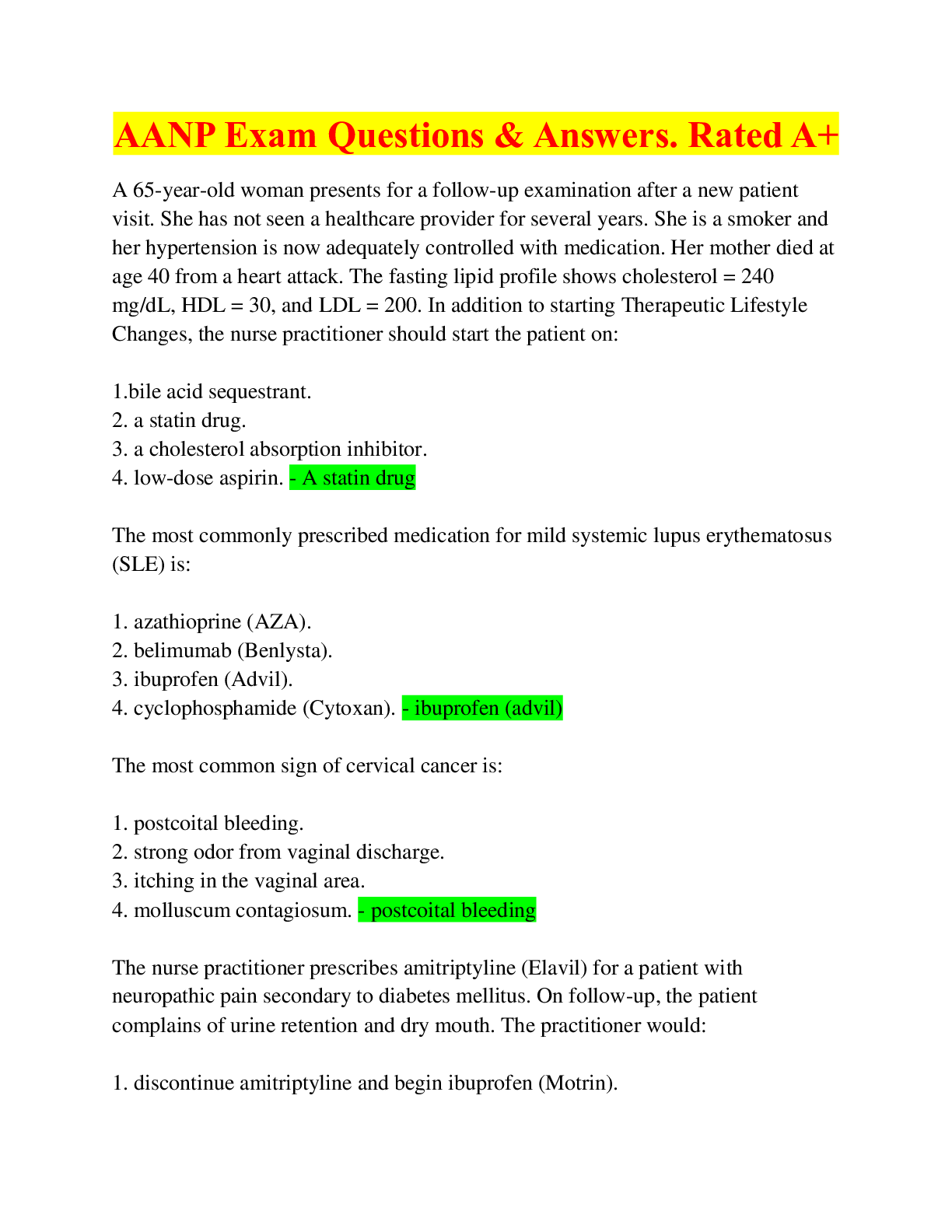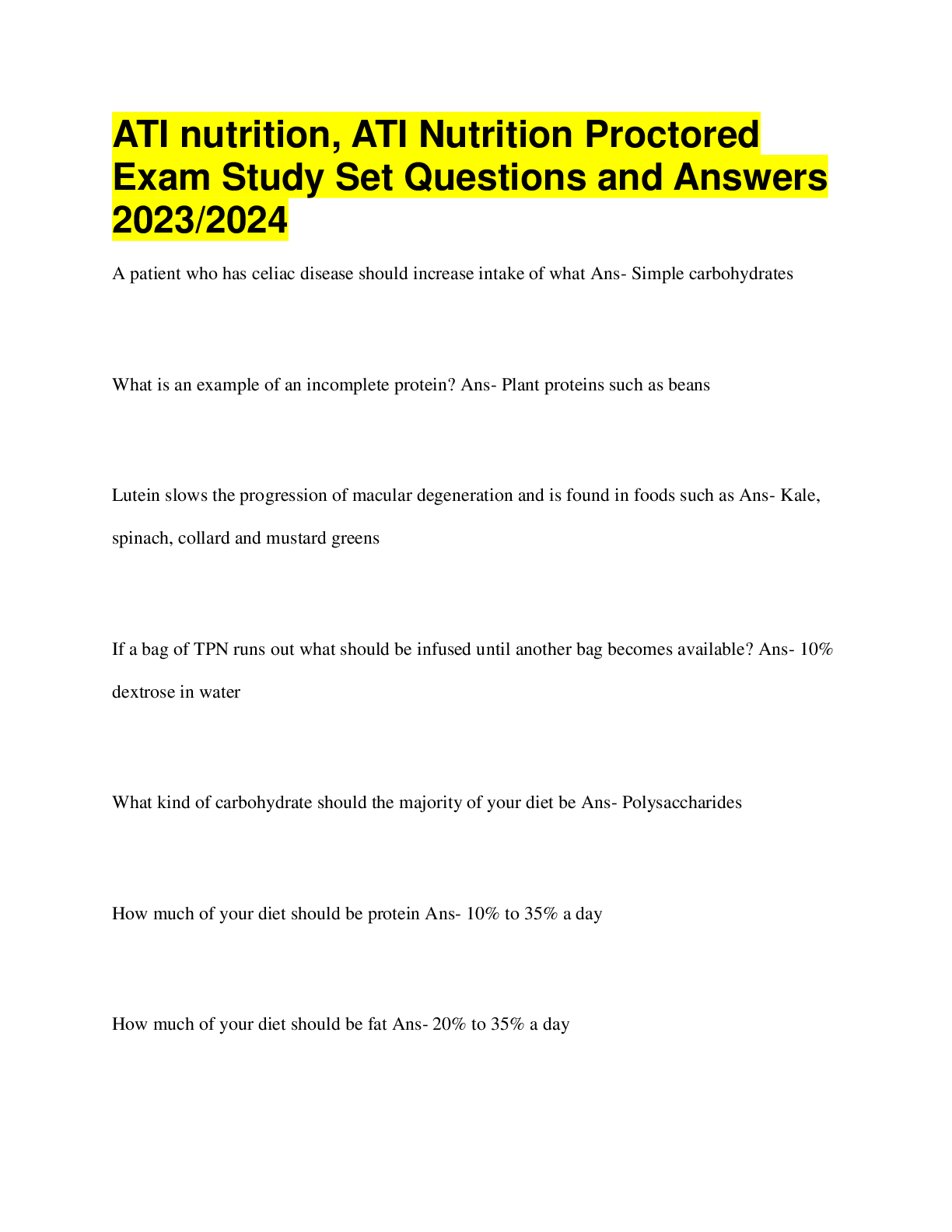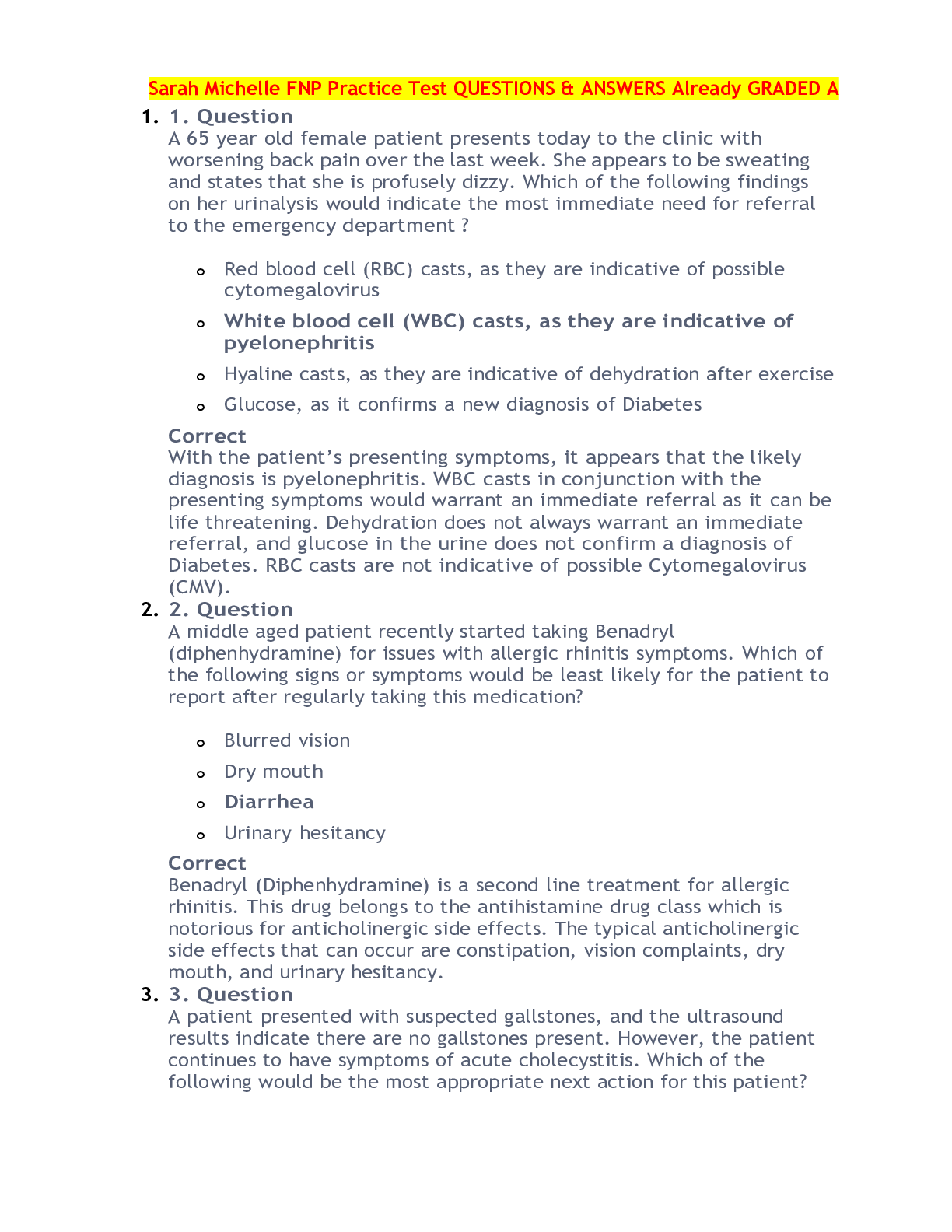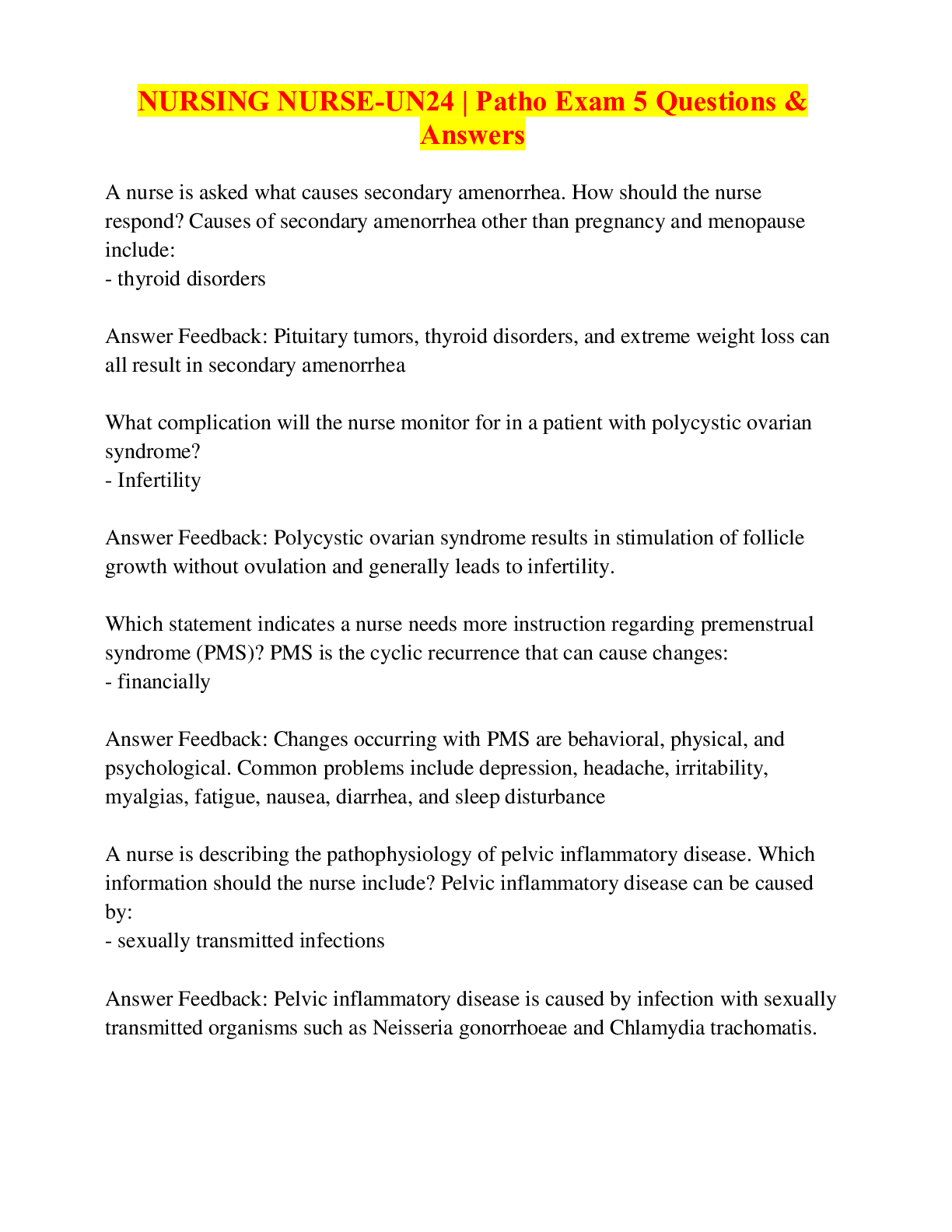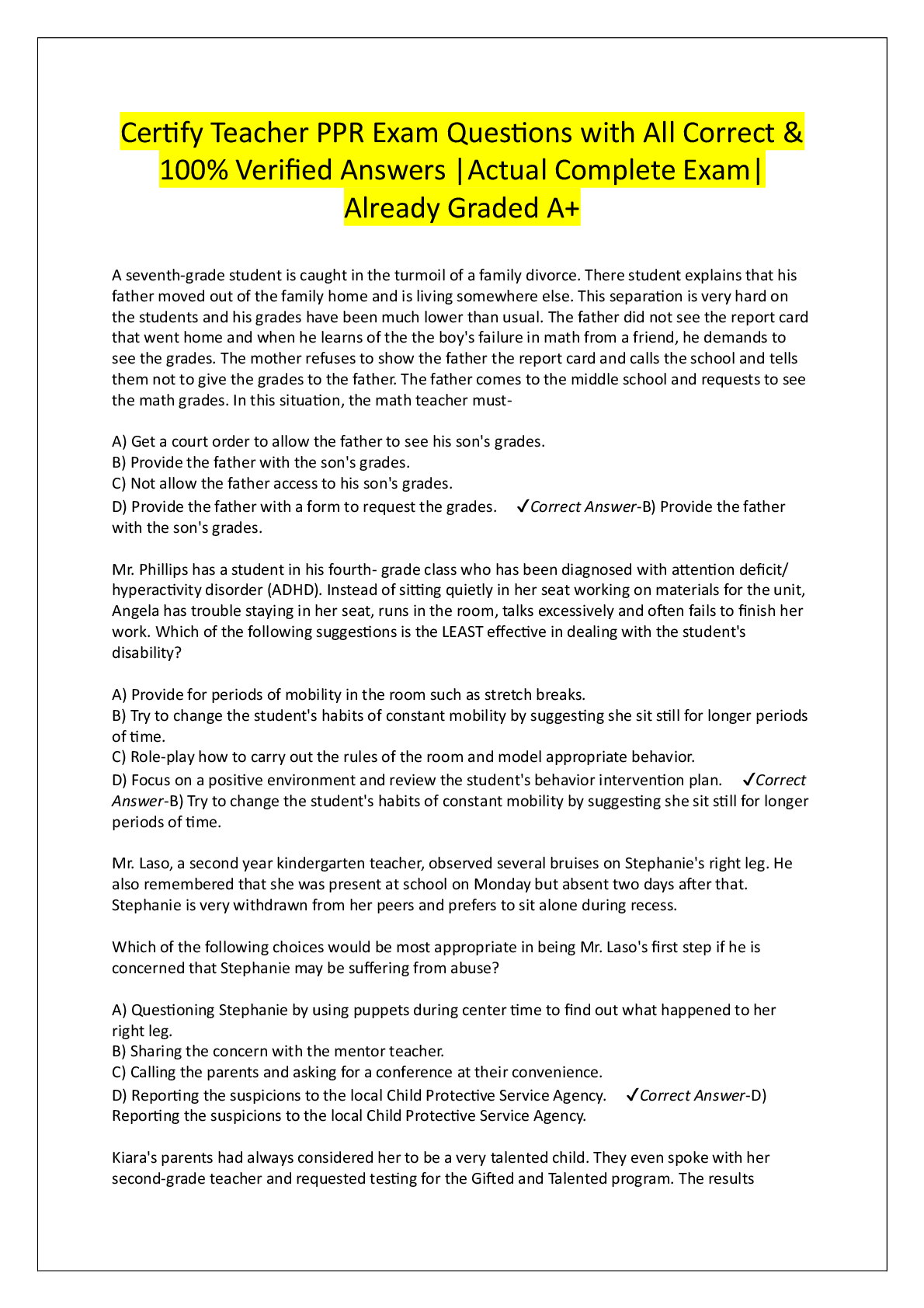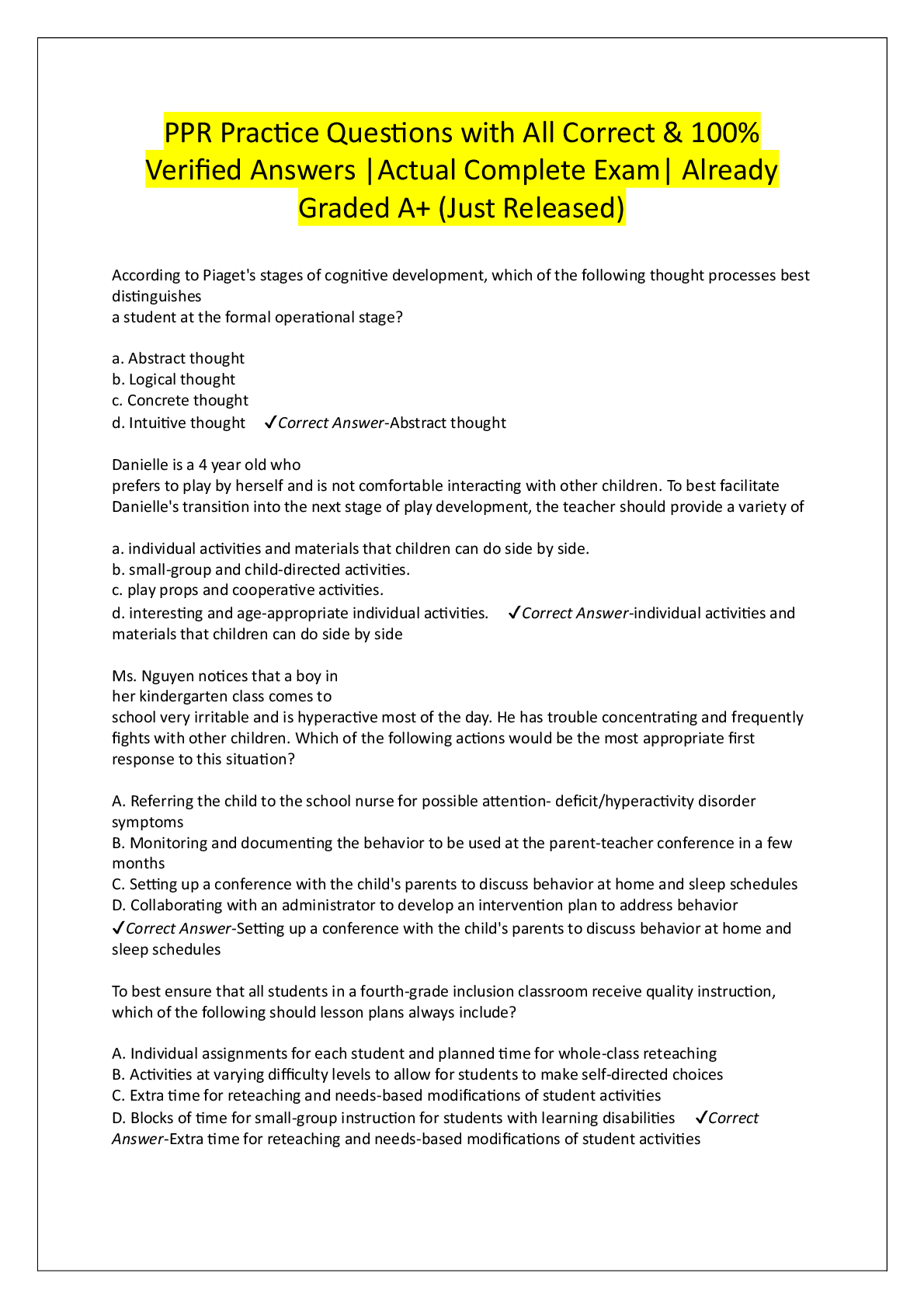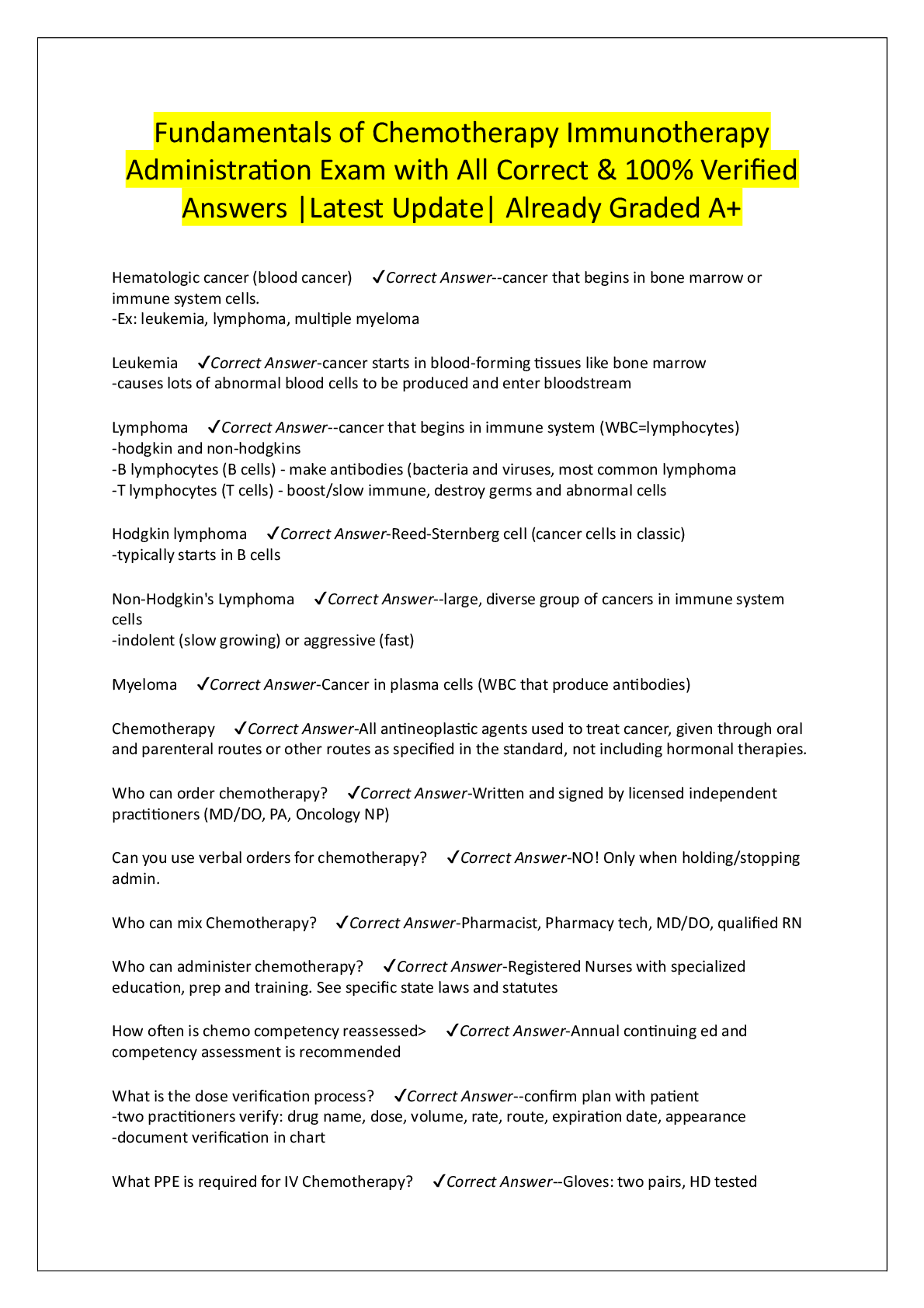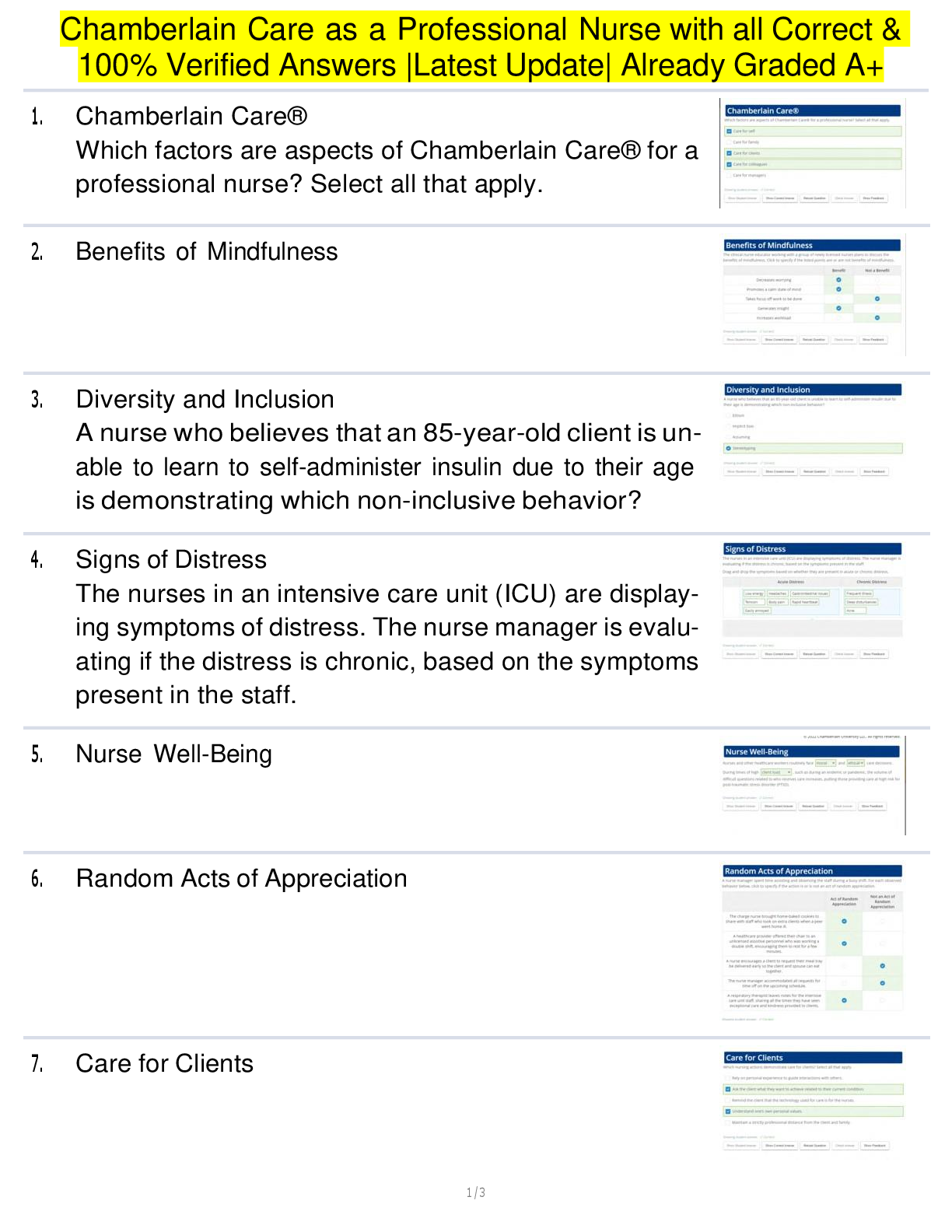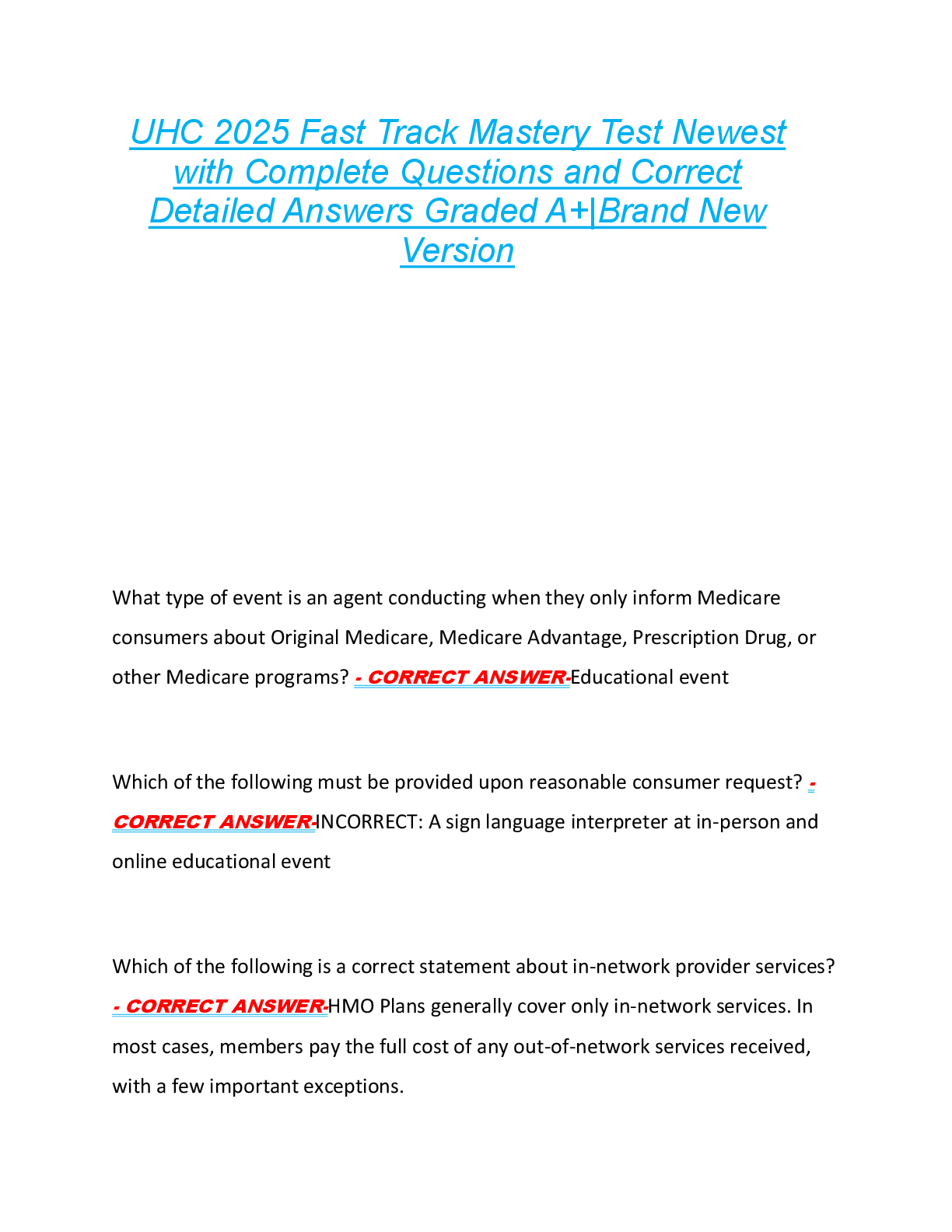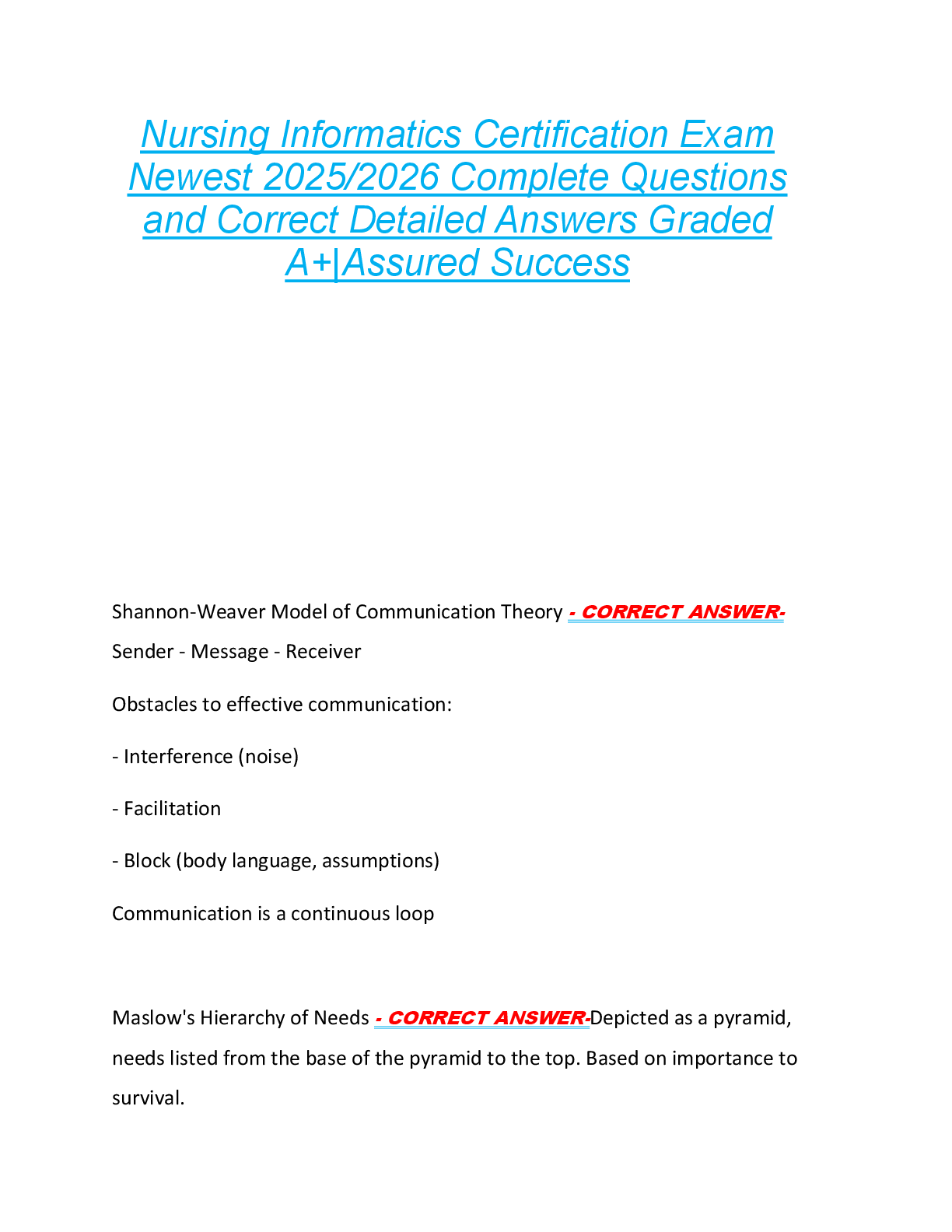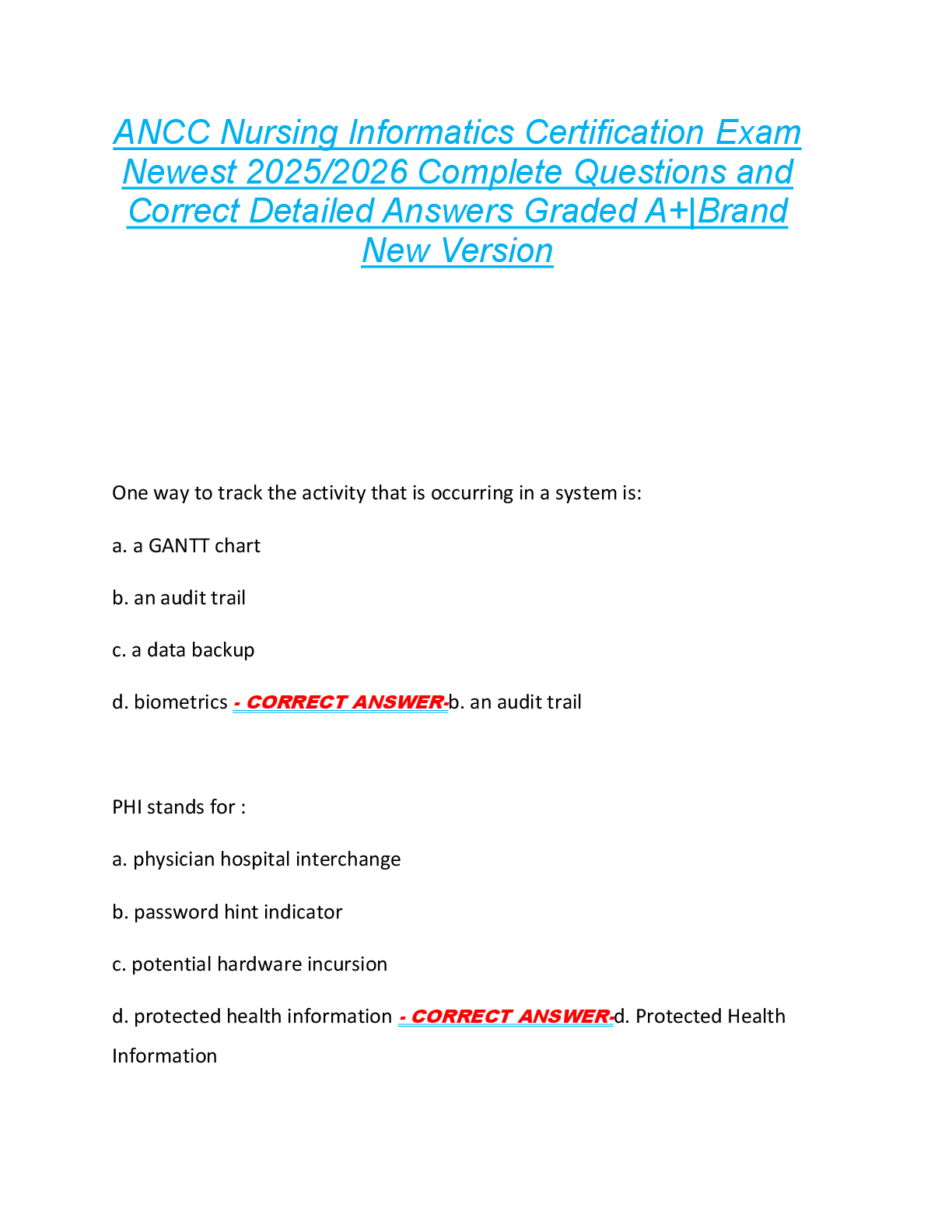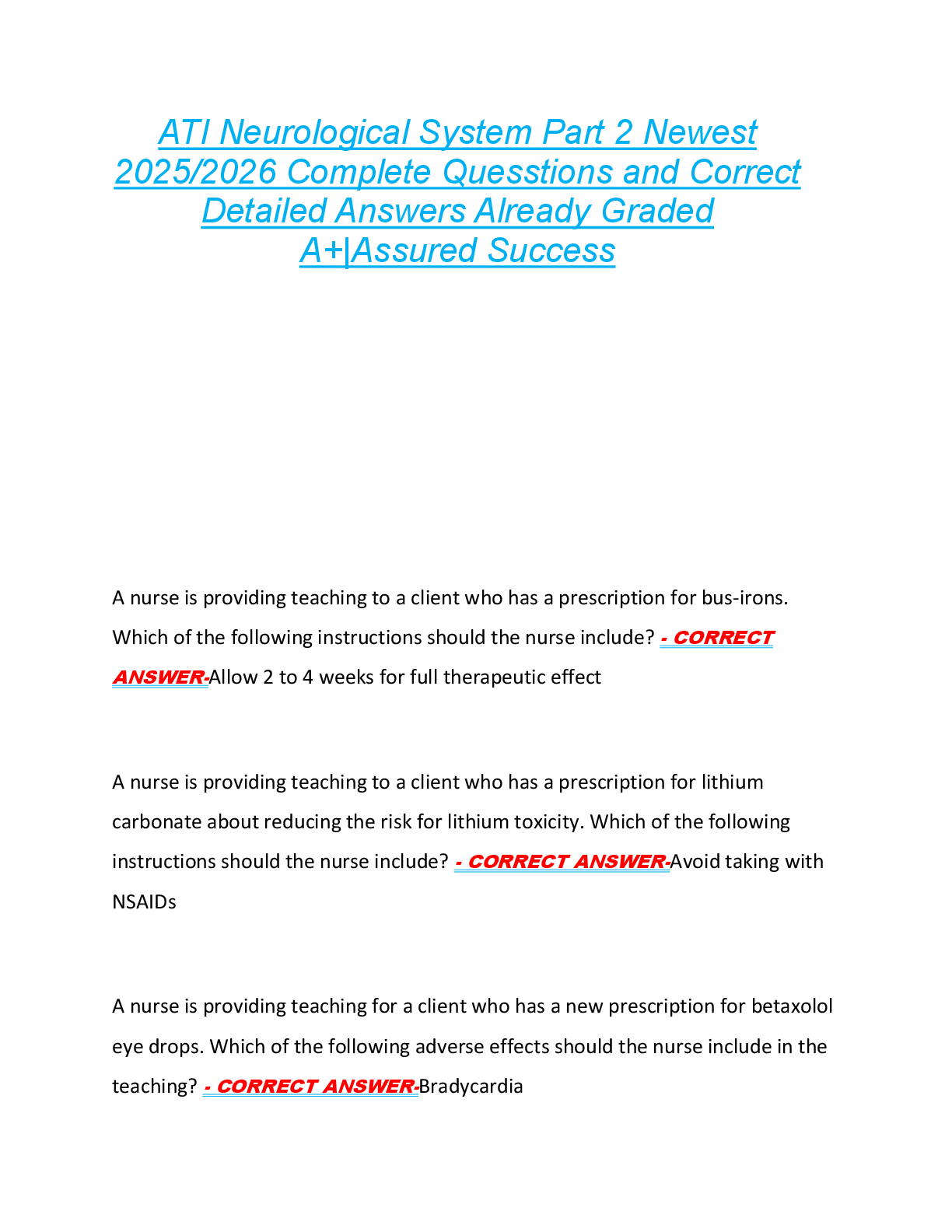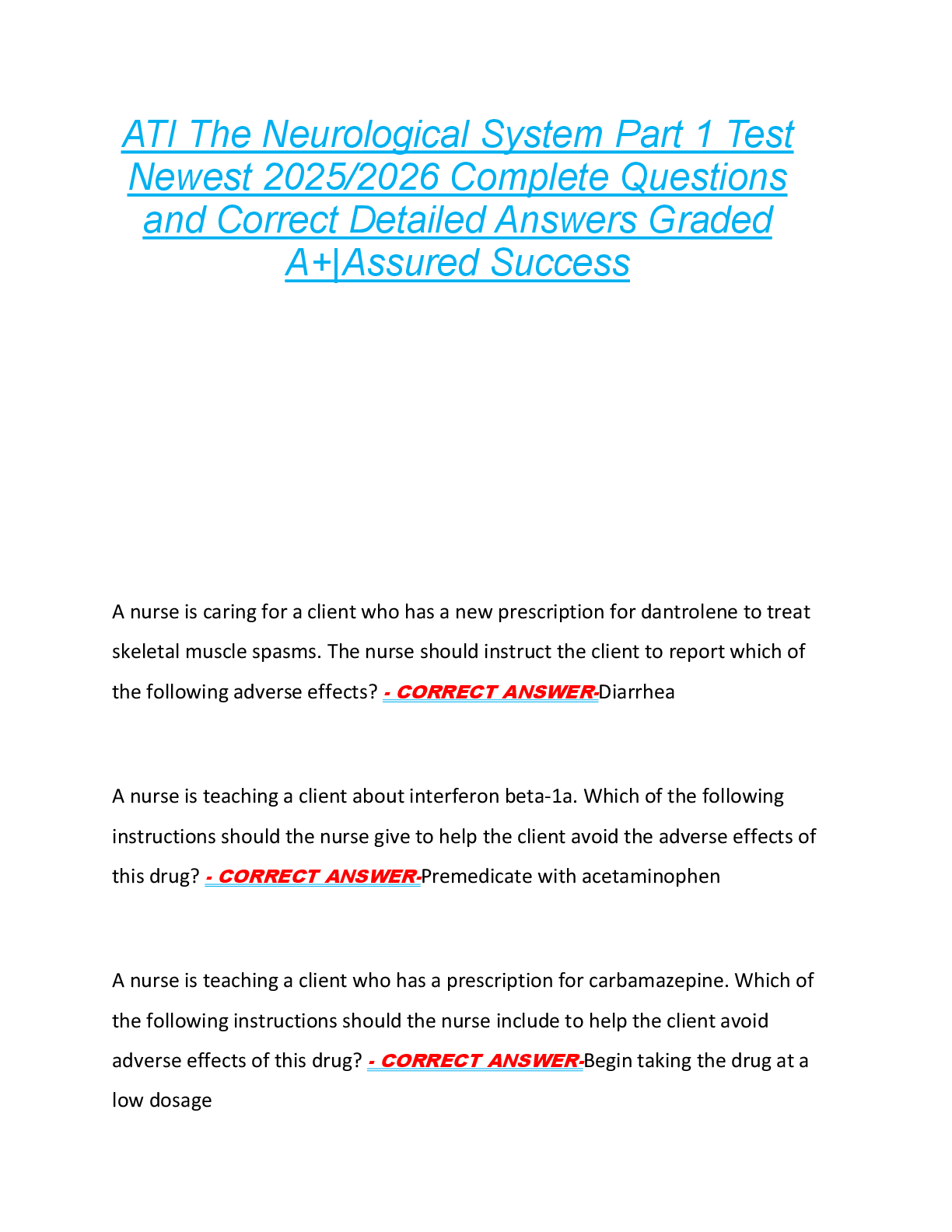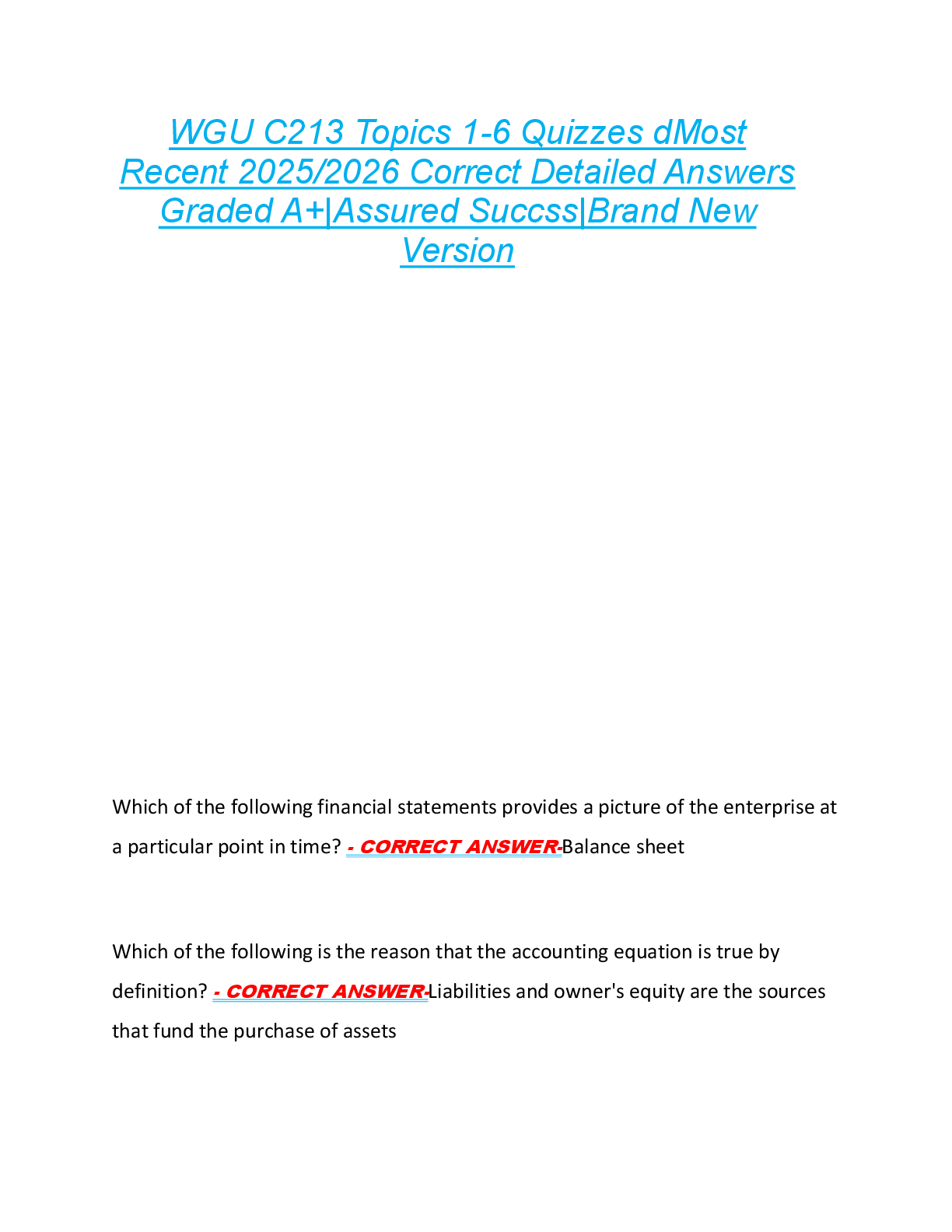NURSING NURSE-UN24 | Patho Exam 3 Questions & Answers
Document Content and Description Below
NURSING NURSE-UN24 | Patho Exam 3 Questions & Answers-The nurse working in an outpatient nephrology clinic knows that which of the following are primary functions of the kidneys? (Select all that appl ... y.) A. Production of clotting factors B. Homeostasis C. Excretion of metabolic wastes D. Regulation of acid-base balance E. Metabolism of fats - B, C, D The kidneys do not metabolize fats. Production of clotting factors is a primary function of the liver. The kidneys maintain blood pressure using the RAAS and also produce erythropoietin to stimulate RBC production. In caring for a patient diagnosed with acute kidney injury, the nephrology nurse knows that which of the following tests are specific for renal function? (Select all that apply.) A. Aspartate aminotransferase (AST) B. Blood urea nitrogen C. Creatinine D. Glomerular filtration rate E. White blood cell count - B, C, D AST related to LIVER function In caring for a patient with acute kidney injury the nurse knows that the patient's renal function has returned to normal range when the patient's GFR measures: A. 30-40 mL/min B. 40-50 mL/min C. 70-90 mL/min D. 90-120 mL/min - D Normal GFR is 90-120 mL/min Normal Creatinine 0.6-1.1 for females and 0.6-1.2 for males Normal BUN is 10-20 mg/dL *Be sure to know these normal values, you will use them daily as a nurse The nursing working in a geriatric living facility understands that as patients age, which change in glomerular filtration rate is expected? A. Increased GFR B. Decreased GFR C. Same GFR D. No GFR - B Aging and renal function: Decrease in renal blood flow and GFR → altered sodium and water balance Number of nephrons decrease due to renal vascular and perfusion changes Response to acid-base changes is delayed Increased risk for drug toxicity Alterations in thirst and water intake Get dehydrated very easily; do not recognize thirst and heat Decreased muscle mass may lead to decreased creatinine values An older patient is experiencing urinary stasis. The registered nurse knows that urinary stasis may lead to which of the following? A. Increased GFR B. Hypocoagulation C. Hypertension D. Infection - D Urinary stasis is a risk factor for developing UTI Which of the following is classified as the most common primary mineral salt composition of kidney stones? A. Calcium B. Struvite C. Uric Acid D. Cysteine - A A - calcium (i.e. oxalate or phosphate) is most common *Note that a change in urine pH may lead to precipitation of stones Which of the following are risk factors for developing renal tumors? (Select all that apply.) A. Female gender B. Smoking C. Obesity [Show More]
Last updated: 8 months ago
Preview 1 out of 26 pages
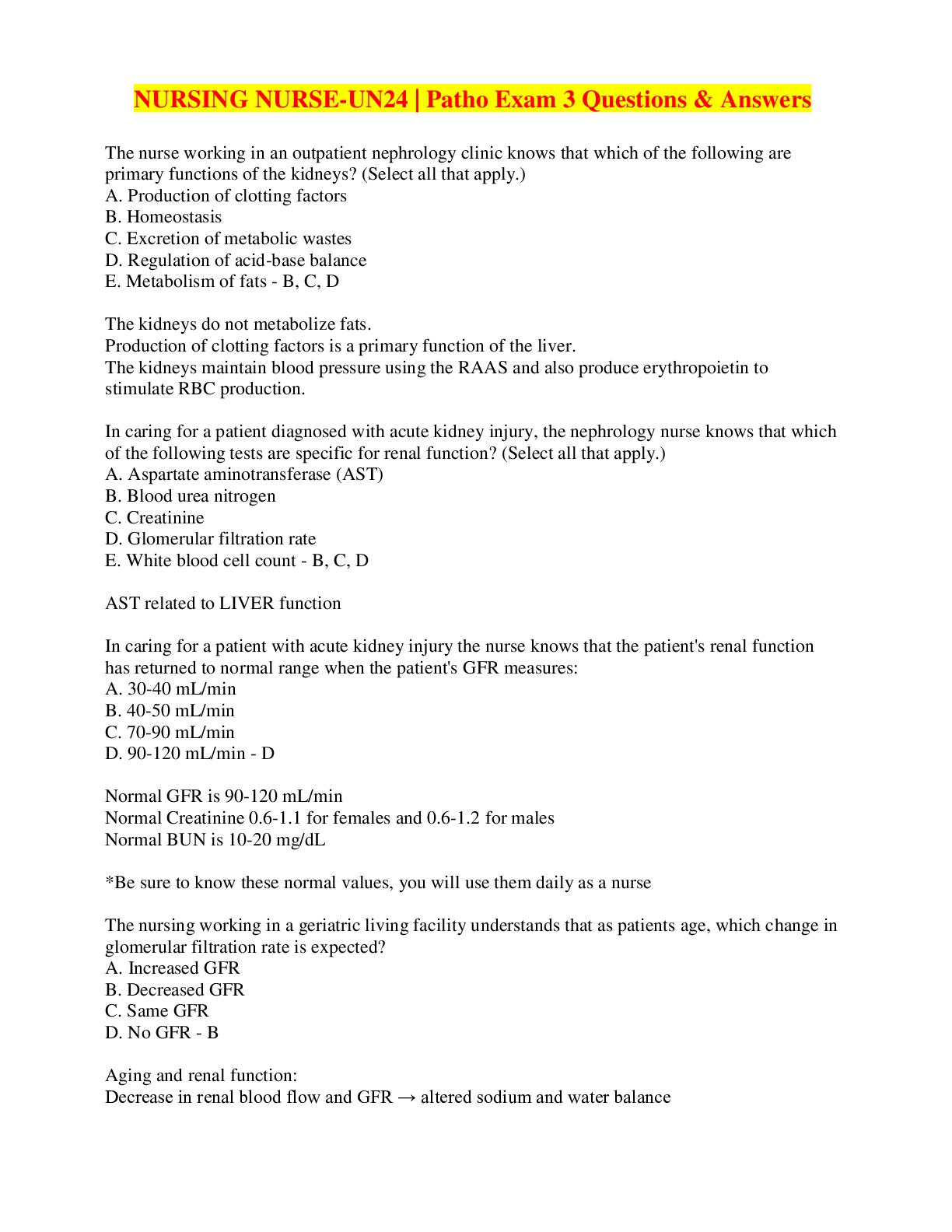
Buy this document to get the full access instantly
Instant Download Access after purchase
Buy NowInstant download
We Accept:

Also available in bundle (1)
Click Below to Access Bundle(s)

COMPREHENSIVE NURSING NURSE-UN24 | Patho Exam 1,2,3,4 & FINAL EXAMS Questions & Answers Bundle (Everything you need including study guides)
COMPREHENSIVE NURSING NURSE-UN24 | Patho Exam 1,2,3,4 & FINAL EXAMS Questions & Answers Bundle (Everything you need including study guides)
By PROF 2 years ago
$45.5
8
Reviews( 0 )
$13.50
Can't find what you want? Try our AI powered Search
Document information
Connected school, study & course
About the document
Uploaded On
Mar 06, 2023
Number of pages
26
Written in
All
Additional information
This document has been written for:
Uploaded
Mar 06, 2023
Downloads
0
Views
190

